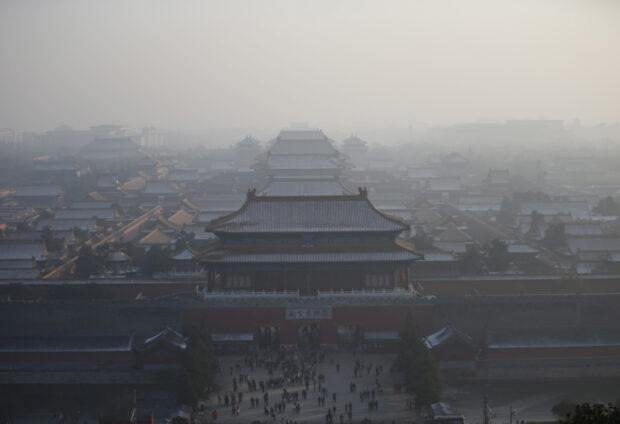China issues action plan to improve air quality

FILE PHOTO: The Forbidden City is seen from the top of Jingshan Park during a heavily polluted day in Beijing, China, November 29, 2015. REUTERS/Kim Kyung-Hoon/ File photo
BEIJING — China will “strictly and reasonably” control total coal use and curb high-emissions projects to improve air quality, China’s state council said in an action plan released on Thursday.
By 2025, China wants to cut the density of hazardous airborne particles known as PM2.5 by 10% compared with 2020 and keep the number of days with severe pollution to less than 1%, according to the plan.
Other proposed measures include the development of new and clean energy, increasing natural gas production, and curbing projects that lead to high energy consumption and high emissions.
READ: Unfazed by smog, runners go maskless in Beijing
The plan sets a target to reduce coal consumption in the Beijing-Tianjin-Hebei region and surrounding areas by about 10% from 2020 levels by 2025. A 5% reduction is targeted for the Yangtze River Delta region.
Article continues after this advertisementCoal use in northern China’s Shanxi and Shaanxi provinces will be cut over the same period.
Article continues after this advertisementCaptive coal-fired generators that provide electricity to single factories or industrial complexes will not be permitted in general and only those that contribute to the overall safety of grid operation will be considered, the statement said. Inefficient, small-scale coal-fired boilers will also be mothballed, it said.
The government also called for the consumption of energy from alternative or renewable sources to account for about 20% of total consumption by 2025.
READ: Sandstorms, dangerous pollution return to Beijing
China will as well promote the use of electric vehicles to reduce carbon emissions, with fast-charging stations at no less than 80% of highway service areas in key regions – including Beijing, Tianjin and Shanghai – by 2025 and no less than 60% in other regions.
The government called for increasing freight cargo transport by rail and water by about 10% and 12%, respectively, by 2025 versus 2020 to cut down on higher-polluting road transport.
Railway should account for 90% of long-haul coal transport around key mining hubs in the northern and northwestern regions by 2025, the also document said, without giving a comparison.
READ: Study: Northern Luzon rural folk breathing dirty air from China
The world’s second-largest economy plans to expand funding for clean heating in the northern region and increase credit and financing support for upgrading traditional industries, it said.
Chinese cities have grappled with high air pollution readings in recent months despite authorities’ efforts to improve air quality in recent years.